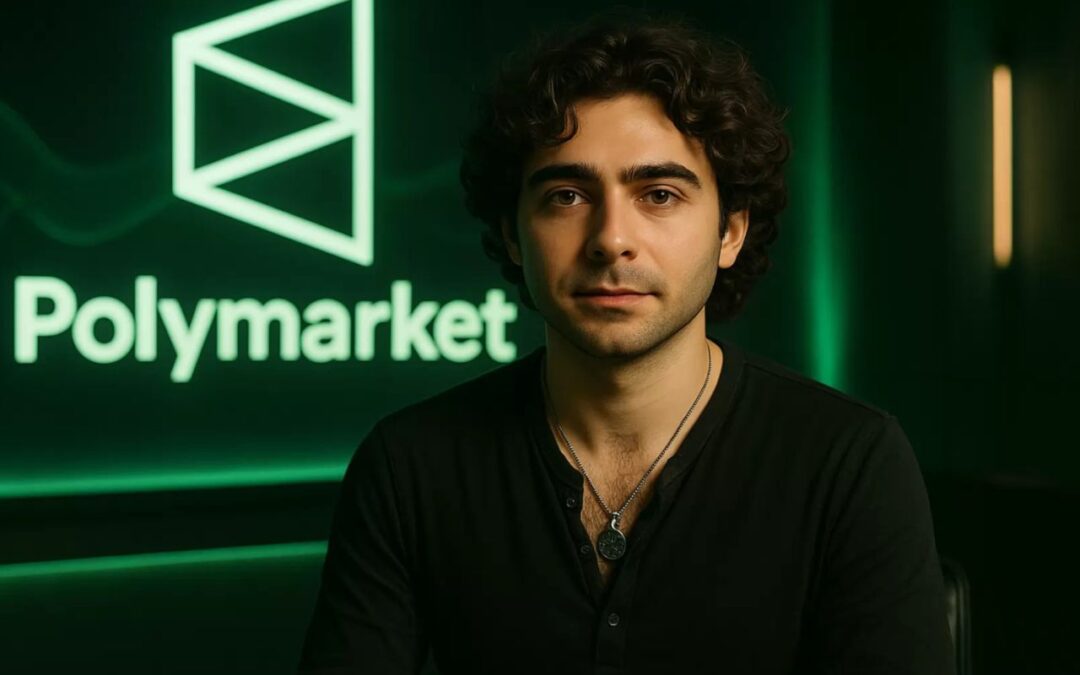Synopsis: Polymarket, the blockchain-based prediction platform, is reportedly seeking funding at a $12–15 billion valuation over 10x its June valuation driven by explosive user growth, ICE partnership, and surging market dominance.
Blockchain-based prediction market Polymarket is reportedly in early talks with investors to raise new funds at a stunning valuation between $12 billion and $15 billion, according to Bloomberg. If finalized, this would mark a more than 10-fold jump from its $1 billion valuation in June, when it raised $200 million in a round led by Peter Thiel’s Founders Fund.
This rise feels unbelievable but not unexpected. The platform’s momentum has become one of the most striking success stories in digital markets this year.
$1 Billion to Potential $15 Billion
Polymarket’s meteoric surge within months has left even skeptical investors impressed. In June 2025, it attained unicorn status after a $200 million raise; now, just four months later, it seeks a valuation nearly 15 times higher.
Founded in 2020 by Shayne Coplan, the company has already raised $2.07 billion, including a strategic deal with the Intercontinental Exchange earlier this month. That partnership, worth up to $2 billion, allowed Polymarket to re-enter the U.S. market after a three-year absence.
Its growth mirrors a sharp boom in prediction markets platforms where users trade shares on real-world outcomes such as elections, sports, or economic events. Polymarket processes bets through stablecoins like USDC on the Polygon network, translating human sentiment into probabilities.
The company’s trading volumes have also skyrocketed. Weekly trades reached nearly $2 billion in mid-October, and its total cumulative volume stands above $18 billion. I find that level of user engagement truly remarkable for a platform still under five years old.
High-Profile Partnerships
Polymarket’s expansion is not driven by hype alone. It has actively signed high-impact agreements this year, signaling its intent to blend crypto innovation with mainstream recognition.
Its partnership with the National Hockey League made headlines, marking the first time a professional sports league allowed prediction markets to use its trademarks. It also works with DraftKings, OpenAI, and X (formerly Twitter) to integrate data-driven prediction models and enhance accessibility.
Perhaps most importantly, ICE’s investment brought long-sought regulatory credibility, giving Polymarket access to institutional-grade data and helping it rebuild confidence after past scrutiny from regulators.
The addition of leaders like Donald Trump Jr. and former CFTC Chair J. Christopher Giancarlo to the advisory board reflects the firm’s new strategy bridging between traditional finance and decentralized technology. Personally, I think this combination of political savvy and tech innovation could prove decisive in expanding its U.S. footprint.
Rising Competition and Investor Outlook
Polymarket’s biggest rival, Kalshi, raised $300 million earlier this month at a $5 billion valuation. It is now courting investors at valuations exceeding $10 billion. Together, these firms have turned prediction markets into one of the most closely watched corners of decentralized finance.
Still, Polymarket retains the upper hand with over 52% market share in crypto-native betting. Many traders note that the platform predicted real-world events, including the 2024 U.S. election, with over 90% accuracy, according to data from Dune Analytics.
While no comment came from Polymarket, speculation around a possible $POLY token and airdrop continues to stir excitement. Investors on X are already discussing how a new funding round could lift the platform into the $20 billion club.
However, challenges persist. U.S. regulators continue to monitor the sector closely, and certain countries, including France and Singapore, still restrict such platforms. Even so, if this funding closes near its upper range, CEO Shayne Coplan’s stake alone could be worth billions.
Prediction markets have long promised a smarter, more democratic way to measure consensus. With Polymarket’s rise, we might finally see that idea move from theory into reality. And frankly, it’s refreshing to watch a crypto firm grow not through memes, but through measurable accuracy and user trust.
Written By Fazal Ul Vahab C H

